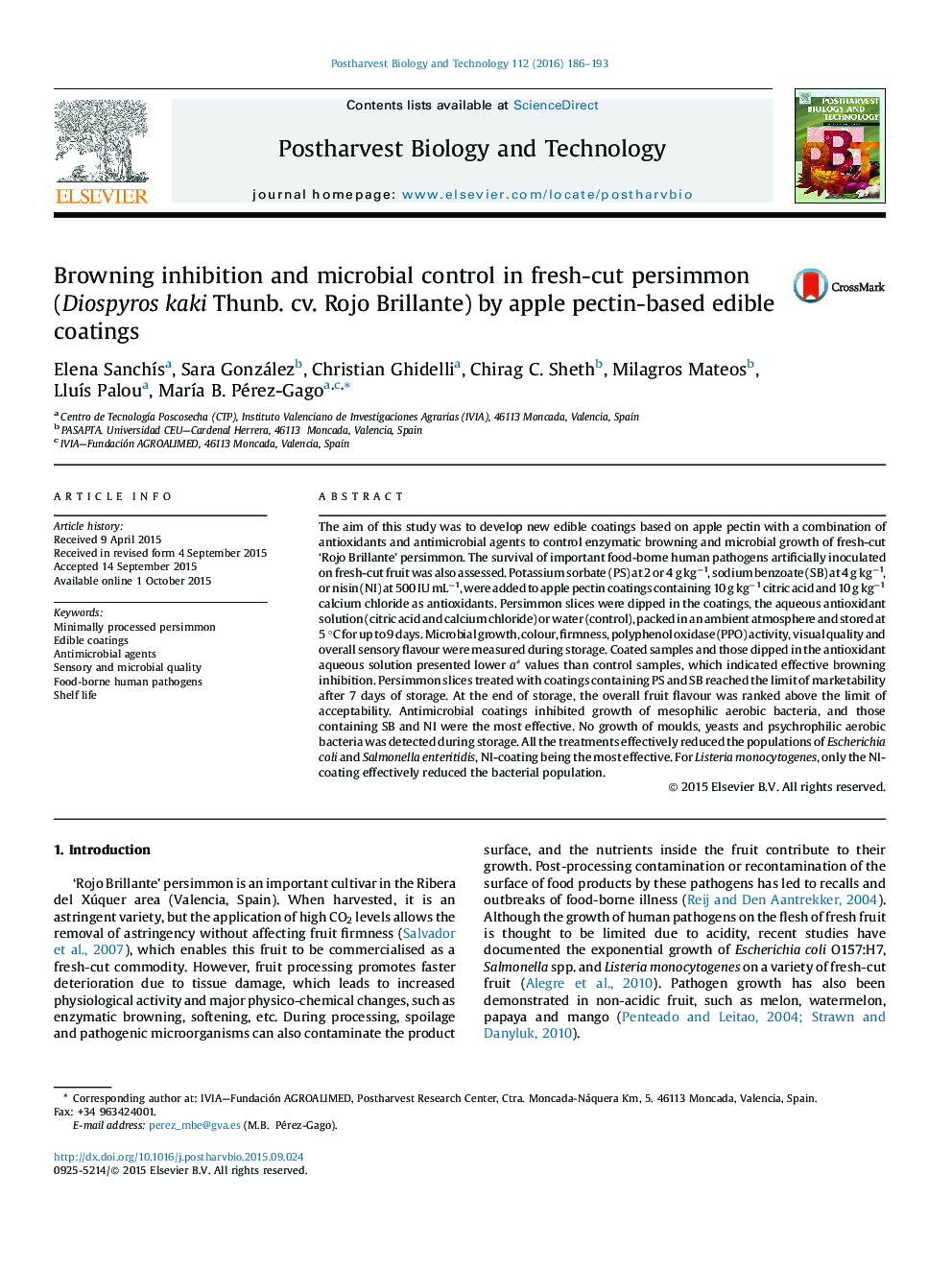| کد مقاله | کد نشریه | سال انتشار | مقاله انگلیسی | نسخه تمام متن |
|---|---|---|---|---|
| 4517937 | 1624982 | 2016 | 8 صفحه PDF | دانلود رایگان |

• Pectin-based coatings controlled browning and microbial growth of fresh-cut persimmon.
• Coatings had antioxidants, potassium sorbate (PS), sodium benzoate (SB) or nisin (NI).
• Coatings with 2% PS or 4% SB were the most effective to maintain the visual quality.
• NI also inhibited the growth of food-borne human pathogens in inoculated persimmons.
The aim of this study was to develop new edible coatings based on apple pectin with a combination of antioxidants and antimicrobial agents to control enzymatic browning and microbial growth of fresh-cut ‘Rojo Brillante’ persimmon. The survival of important food-borne human pathogens artificially inoculated on fresh-cut fruit was also assessed. Potassium sorbate (PS) at 2 or 4 g kg−1, sodium benzoate (SB) at 4 g kg−1, or nisin (NI) at 500 IU mL−1, were added to apple pectin coatings containing 10 g kg−1 citric acid and 10 g kg−1 calcium chloride as antioxidants. Persimmon slices were dipped in the coatings, the aqueous antioxidant solution (citric acid and calcium chloride) or water (control), packed in an ambient atmosphere and stored at 5 °C for up to 9 days. Microbial growth, colour, firmness, polyphenol oxidase (PPO) activity, visual quality and overall sensory flavour were measured during storage. Coated samples and those dipped in the antioxidant aqueous solution presented lower a* values than control samples, which indicated effective browning inhibition. Persimmon slices treated with coatings containing PS and SB reached the limit of marketability after 7 days of storage. At the end of storage, the overall fruit flavour was ranked above the limit of acceptability. Antimicrobial coatings inhibited growth of mesophilic aerobic bacteria, and those containing SB and NI were the most effective. No growth of moulds, yeasts and psychrophilic aerobic bacteria was detected during storage. All the treatments effectively reduced the populations of Escherichia coli and Salmonella enteritidis, NI-coating being the most effective. For Listeriamonocytogenes, only the NI-coating effectively reduced the bacterial population.
Journal: Postharvest Biology and Technology - Volume 112, February 2016, Pages 186–193